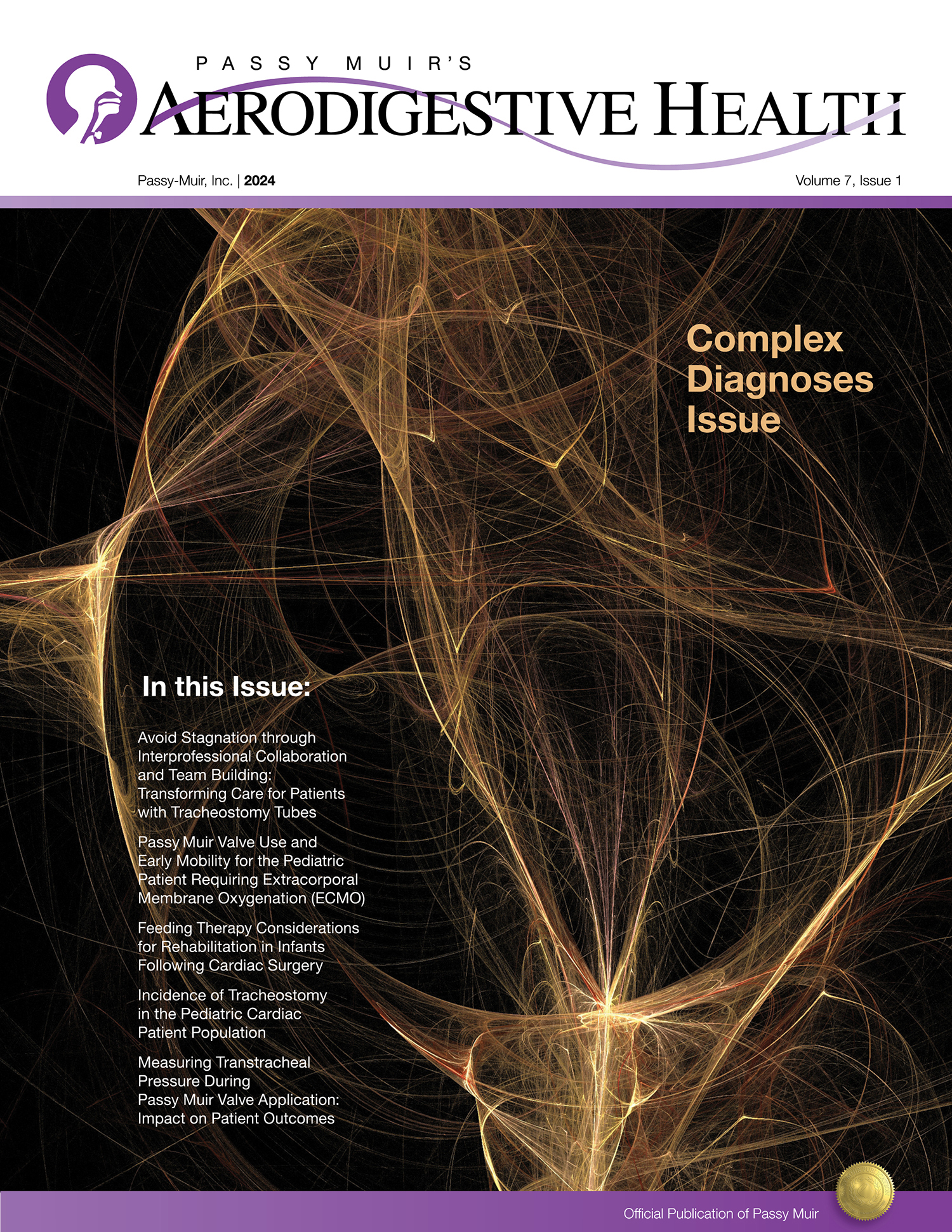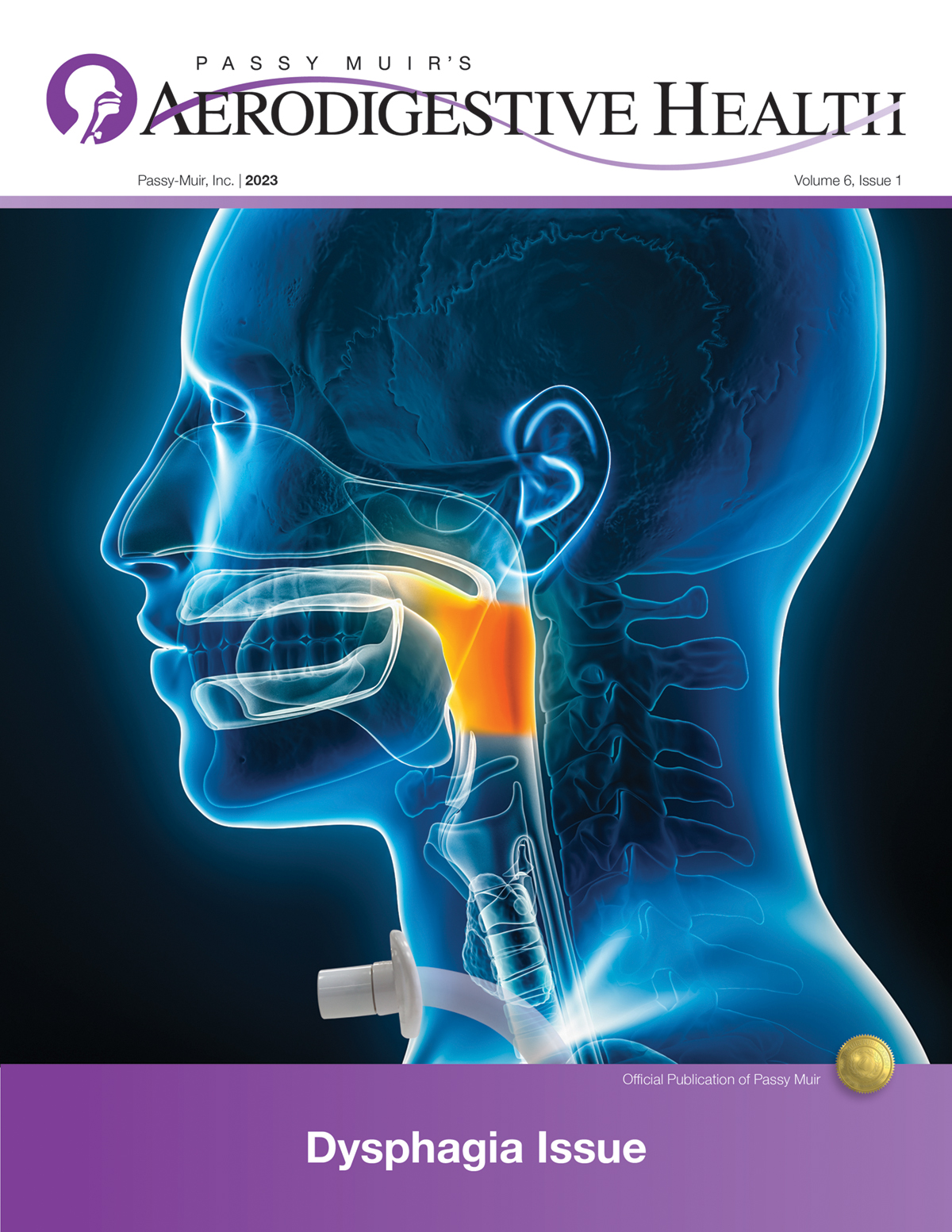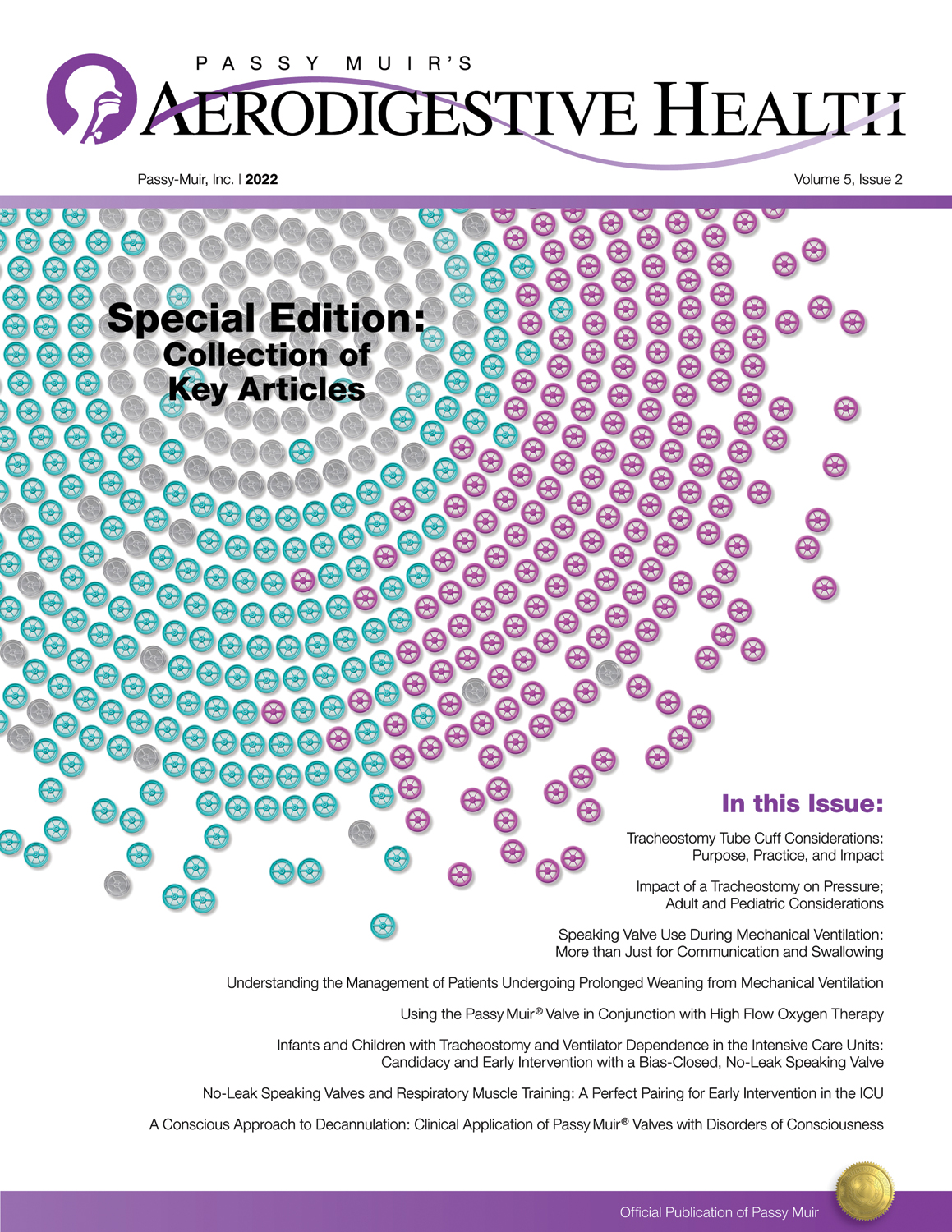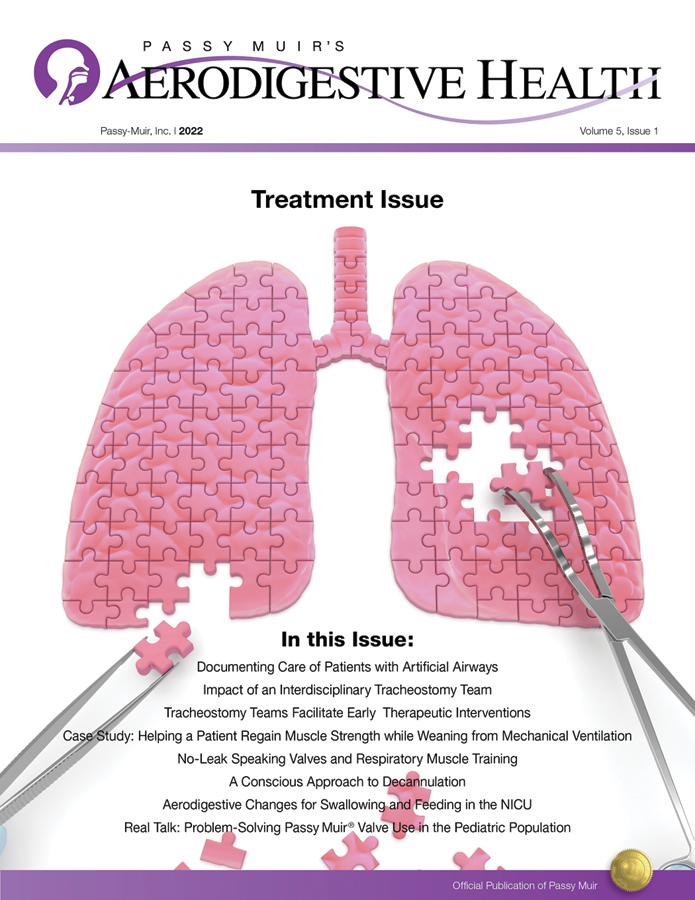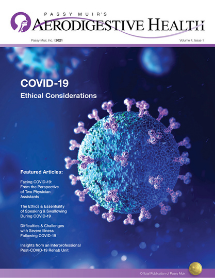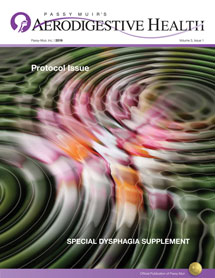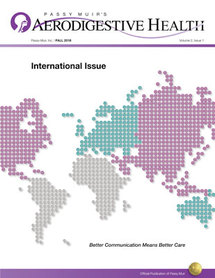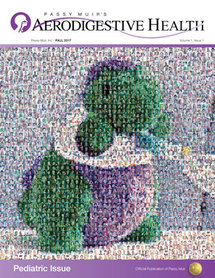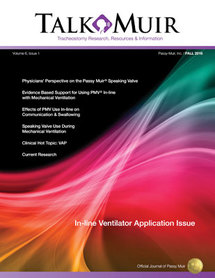Passy Muir regularly features articles in its publications on cutting-edge therapies and evidence-based clinical practice drawn from the collaborative efforts of the Passy Muir Clinical Team and expert researchers and clinicians from different disciplines and settings. They are intended to inspire discussion about the Passy Muir® Valve and advancement in issues related to the care and management of patients with tracheostomy and mechanical ventilation.
Interested in publishing an article with Passy Muir? We’re currently looking for clinical articles on caring for patients with tracheostomies to include in our publication, Aerodigestive Health.
Contact us: aerodigest@passymuir.com
Research Articles
Impacting Patient Care and Ethical Considerations
Understanding the Management of Patients Undergoing Prolonged Weaning from Mechanical Ventilation
Tracheostomy Tube Cuff: Purpose and Practice through Team Management
Management of Complications Following SCI and the Role of SLPs on a Multidisciplinary Team
High Flow Oxygen Therapy and the PMV®
Articles Representing International Research on Tracheostomy, Mechanical Ventilation and Passy Muir®
Assessment Considerations for PMV® Candidacy in the Pediatric Population
Candidacy for Passy Muir® Valve Placement in Infants and Young Children: The Airway Assessment
Keys to Success: A Pediatric Respiratory Therapy Case Study
Hot Topic Box: Mobility and Postural Stability
Current Research Related to Speaking Valve Use with the Pediatric Population
Physicians’ Perspective on the Passy Muir® Speaking Valve
Evidence Based Support for Using a PMV® In-line with Mechanical Ventilation
Effects of PMV® In-line with Mechanical Ventilation on Communication and Swallowing
Speaking Valve Use During Mechanical Ventilation:More than Just for Communication and Swallowing
Current Research Related to Mechanical Ventilation and Speaking Valve Use




